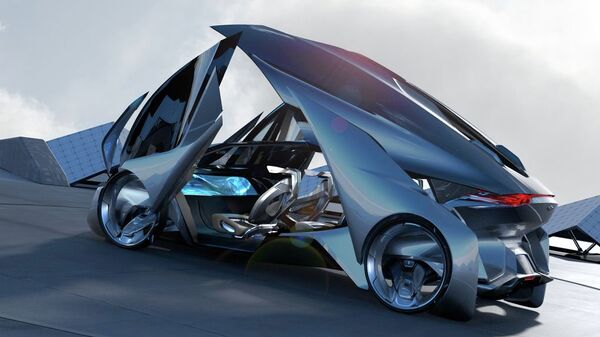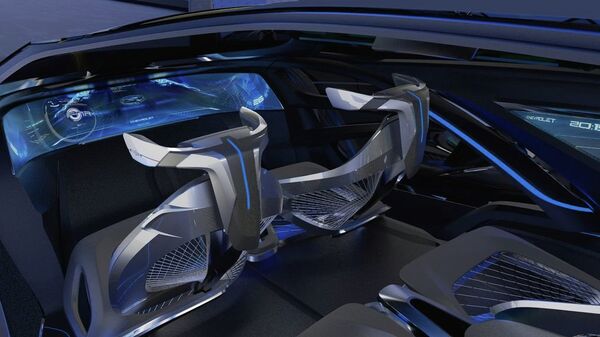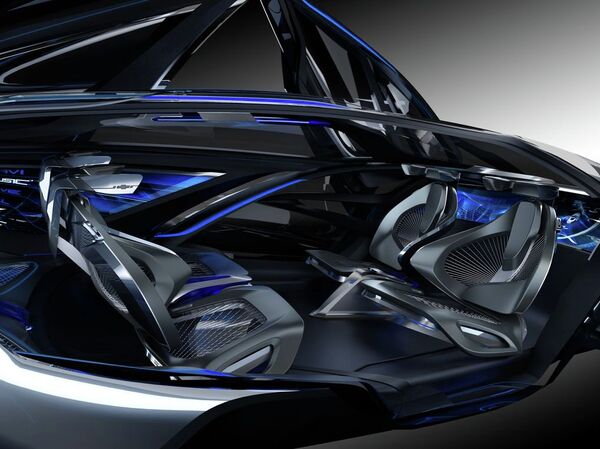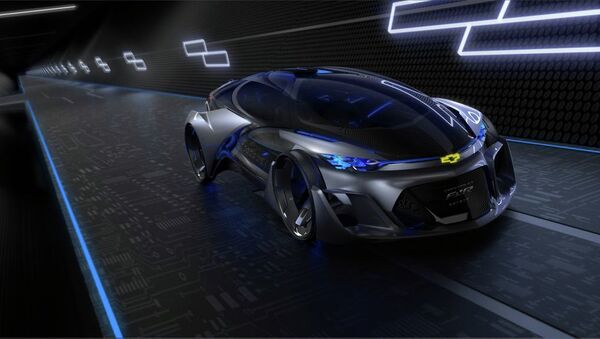The "futuristic capsule design" is the work of GM's Shanghai-based Pan Asia Technical Automotive Center, but the shape and the look aren't the only futuristic part of this car.
A radar mounted on the car's roof would, in theory, map out the area to create a path for the autonomous car to whisk its passengers along.
And since keys would no doubt be much too mundane for this vehicle, an iris recognition system authenticates the identity of the driver.

The FNR (which stands for Find New Roads) has nearly open hubless wheels — each of which is to have its own electric motor. The drivetrain electric charging system is wireless.
Though a fully operational system won't be hitting the roads soon, GM has already used some of the technology necessary for such a system in its vehicles, like blind spot warnings and lane change alerts, John Capp, GM’s global director of safety strategies and vehicle programs, told Fortune magazine.
"It’s a step-by-step progression—some of the things we introduced in 2010 and 2011 are now trickling down into our production cars."

When the car is open, there's only a thin roof beam along the top. When closed, the door panels form a transparent canopy to create a wrap-around view for those inside.
The panels on the dashboard, when not being used for manual control of the car, display road and driving information or entertainment.

Chevy maintains that the driver will be able to take control of the car whenever they want, though the details on how steering with gesture controls works are fuzzy.
But, "for drivers who like an edgier performance experience, the FNR will be able to tighten its suspension and execute tight turns while hitting high but legal speeds", Chevy told Fortune.

Other big auto manufacturers like Mercedes Benz are working on autonomous vehicles, as are Google, Uber, Apple and Tesla, to name a few.


